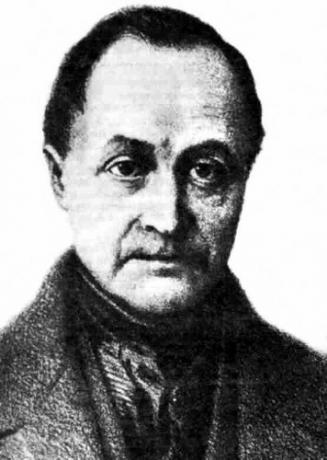O naturalism, aesthetic and literary trend in vogue in the last quarter of the 19th century, emerged in France and is understood by many critics as a most extreme current of realistic movement, often also called realism-naturalism.
The term naturalism was used as an artistic aspect by the writer Émile Zola, inspired by the method of investigation of the natural sciences established since the 17th century:
"Naturalism, in letters, is equally the return to nature and to man, direct observation, exact anatomy, acceptance of the painting of what exists." |1|
Committed to writing a trustworthy portrait of reality, unlike the idealized and subjective universe of romanticism, the naturalists developed an objective literary style and, as Zola himself postulated, anatomical: the “return to nature” focused on the more animalistic side of man, in frequent pathological descriptions – diseases, heredity, environmental influences, in a constant struggle for survival.

Historical context
Europe of XIX century experienced profound economic, political and social transformations, brought about by two major events of the 18th century: the Industrial Revolution and the French Revolution. With industrialization, the first urban centers and the new economic order of financial capitalism, dividing society between bourgeoisie, the new ruling class after the end of the Old Regime, and the proletariat, the class of salaried workers, who operated the industrial machinery.
Do not stop now... There's more after the advertising ;)
These oppositions and the degrading working conditions of the time provided raw material for the socialist theories of Karl Marx, whose class perspective directly influenced naturalist aesthetics.
The bourgeoisie consolidated itself in power, which propitiated the movement of Second Industrial Revolution, which would lead to the exploitation of steel, oil and electricity. The enthusiasm of new inventions and discoveries it took scientism, in vogue since the 17th century, to its apex: the method of the natural sciences was seen as the main way of understanding reality.
This mentality also gave rise to the positivism, doctrine of Auguste Comte that divided humanity into three stages, the scientific being the most evolved of the three. The theory argued that the only way to arrive at the truth was through scientific investigation – that is, one believes only in what can be proven by the means of science.

It was at this time that Charles Darwin proposed your species evolution theory is that mendel postulated his heredity laws, great influencers of the naturalist current, who understood man as a product of nature – therefore, subject to natural selection and heir to characteristics of previous generations.
Also in vogue at the time was the determinism by Hippolyte Taine, a current of thought that understood the context, the environment in which the individual lives, as a determinant of their actions. Taine postulated that the environment, the race and the moment are the three factors that determine the attitudes and character of individuals, a theory that also directly influenced naturalism (and ended up also making room for theoretical currents of scientific racism, for example).
Read too: Realism in Brazil: follow this literary trend in Brazil
Main characteristics of naturalism
- Emphasis on the more animalistic side of man: hunger, instinct, the “non-civilized” part, sexuality, etc., as well as the zoomorphization of characters;
- Determinism: the individual is no longer a subject, but an extra in history, the result of environmental influences;
- Scientism: man is understood as a product of natural laws;
- Social pathologies: naturalist works emphasize these themes, bringing up topics such as sexual kinks, addictions, diseases, incest, adultery;
- Narrative objectivity and impersonality;
- Preference for everyday themes, often prioritizing the relationships and experiences of the “inferior” classes;
- Predominance of descriptive form;
- Commonly engaged works, denunciations of socially retrograde aspects, poverty and the system of inequalities that founded the emerging capitalism.
Read more: Parnassianism in Brazil: contemporary poetic current to naturalism
Main authors of naturalism
Émile Zola (Paris, 1840-1902)
Considered the founder of naturalistic aesthetics, was a novelist, short story writer, playwright, poet, journalist and literary critic. Understood as the father of the experimental novel, Zola intended to make literature an effective instrument in the struggle for social change. Prolific author, from his vast work the titles stand out the tavern (1886), nana (1880), germinal (1885), the human beast (1890) and Jaccus (1898). He had a decisive influence on most naturalist writers.
Aluisio Azevedo (São Luís-MA, 1857 – Buenos Aires, 1913)

Aluisio Azevedo – writer, playwright, painter, caricaturist and, at the end of his career, diplomat – was the author who inaugurated the naturalist aesthetic in Brazil. your work the mulatto (1881) is considered the first exponent of this literary trend, which reached its peak with the famous the tenement (1890), a novel in which he describes in (pathological) minutiae the social organization of the Rio periphery, where the Portuguese is the owner of the property, divided into smaller portions and rented to Brazilians from the lower classes, who face various social barriers, such as prejudice and exploitation constants.
adolph walks (Aracati-CE, 1867 - Rio de Janeiro, 1897)
A writer, journalist and officer in the Brazilian Navy, his early death from tuberculosis did not prevent him from being one of the most vehement naturalists in the national canon. It debuted in 1886 with the publication in verses Uncertain flights, but it was with the work The Normalist (1893) who established himself as a naturalist author: this is a shocking narrative whose plot centers on an incestuous relationship.
Acclaimed for its detailed descriptions, the most famous novel of walk é The Good Creole (1895), starring a naval officer who becomes romantically and sexually involved with a cabin boy (lower rank of the Navy squares). This is the first Brazilian work centered on a homosexual relationship.
Naturalism in Brazil
Since the 1870s, Brazil went through political and social upheavals: O second reign he was threatened by several crises, which included the long duration of the Paraguayan War (1864-1870) and by the pressure in favor of abolition of slavery – Brazil being the last country to ban this practice, which was based on racial distinction.
Brazilian naturalists were, roughly speaking, abolitionists and engaged in republican movement, so that the aesthetic trend of French origin has gained colors and national problems here: the racism, the colonial legacy of labor relations and land appropriation, miscegenation, etc. The universal issues of social differences mixed with local issues that urged reflection.
Also know: Castro Alves: the romantic poet who defends abolitionist causes
naturalism and realism
Naturalism is understood as a most radical current of realism. The two schools therefore share some premises: the credible portrait of reality, the preference for everyday scenes, the objectivity of the works, the contempt for idealizations. romantics – portraying adultery as opposed to marital lovemaking and social failure as opposed to the idealized hero –, the critique of bourgeois morality and impersonality.
What differentiates naturalism is the pathological approach to characters and situations. While realism favors psychological immersions in the characters, naturalism has an anatomical look, emphasizing disease and the animal aspect of the human being. The characters are approached from the outside in, emphasizing external actions, without concern for psychological deepening. O realism portrays the psychological man, while naturalism proposes the biological man.
If realism proposes to portray man in interaction with his environment, the naturalism goes a little further: exposes the individual as a biological product, whose behavior is determined from these relationships with the environment and according to their hereditary characteristics.
Grades
|1| ZOLA, Émile. Experimental Novel and Naturalism in Theater. São Paulo: Perspectiva, 1982, p. 92.
by Luiza Brandino
Literature teacher


